pectus excavatum baby symptoms
The Side Effects and Symptoms of Pectus Excavatum. Older children may develop issues involving self-image or self-confidence.

Pectus Excavatum October 2017 Babies Forums What To Expect
Chest pain related to abnormal bone and cartilage growth.

. Decreased tolerance to exercise. Rapid heartbeat or palpitations. If the condition is severe the heart and lungs can be affected.
Severe cases of pectus excavatum may affect the function of the heart and lungs in addition to creating psychological difficulty for the child. Children with mild pectus excavatum often have no other symptoms but more severe cases can affect the heart and lungs. The presence of symptoms in patients with pectus excavatum is variable.
The deformity can be recognized in women directly after birth or during the adolescent period. The presence of symptoms in patients with pectus excavatum is variable. Younger children have fewer symptoms than older children.
The main sign of pectus excavatum is a chest that looks sunken in. Due to the pectus patients may have less space in the chest which can limit heart and lung function. With almost any condition there is with some degree of certainty inherently going to be side-effects that come with it and symptoms that will appear and pectus excavatum is no different.
What causes pectus excavatum. Home treatment for pectus excavatum in kids can also include vacuum bell devices. With a severe case of pectus excavatum there can be compression of the heart.
Shortness of breath with exercise. Another common complaint is the sensation of breathlessness particularly on exertion. Physical Therapy for Kids with Inverted Chest.
Those with moderate-to-severe condition may have symptoms such as shortness of breath fatigue exercise intolerancelimitations and chest pain. It can present in toddlers but typically becomes apparent during the growth spurt and puberty. As a result there is a depression in the chest over the sternum which may appear quite deep.
But this deformity happens five times less commonly in females than in males. Pectus excavatum is characterized by an abnormality that gives the chest a caved-in or sunken look. Fatigue feeling tired and weak Shortness of breath.
Often it gets worse at about the time a child starts puberty age 12 to 14 years. Contact Us Refer a Patient. Even though kids who have pectus excavatum are born with it it might not be noticed in the first few years of life.
Improving circulation around injuries by using heat or cold therapy. It can appear as a symptom of Marfan syndrome or sometimes alongside scoliosis curvature of the spine. Pectus excavatum occurs in a baby who is developing in the womb.
Pectus excavatum may also be associated with scoliosis in some. Signs and Symptoms of Pectus Excavatum. Many cases are found in the early teenage years.
The chest wall depression tends to get worse over time until late adolescence. While some of what comes with having funnel chest is going to be common there are also less common ailments that can. From a practical viewpoint this means that detection of a pectus excavatum when examining the patient should not be neglected and should be considered as a possible explanation for the following symptoms.
A child with pectus excavatum usually has a depression in the center of the chest over the breastbone which may appear quite deep. Both or just one side of the breastbone may be affected. Although some children have no symptoms symptoms usually vary with the severity of the abnormality.
Children with moderate to severe pectus deformities often have trouble breathing. Most common sign is slight indentation in the chestSymptoms that appear due to severe cases of pectus excavatum when the breast bone compresses. Moderate-to-severe cases can cause.
Pectus Excavatum and Pregnancy. Poor posture which is often present maybe a factor in the development of such pain and breathlessness. Shortness of breath with exercise.
Certainty chest and back pain is common and is probably musculoskeletal in origin. The most common chest wall deformity pectus excavatum or sunken chest is most likely caused by abnormal growth of the costal cartilage junction between the ribs and sternum. Symptoms may be more severe for some patients than for others and may include any of the following.
Children with moderate or severe forms may have other symptoms such as. Pectus excavatum can appear as a symptom of another disorder or syndrome collection of symptoms often seen together. Decreased stamina compared to peers.
Tachycardia fast heart rate. What are the symptoms of pectus carinatum. Pectus excavatum is due to too much growth of the connective tissue that joins the ribs to the breastbone sternum.
Children with pectus excavatum may have no symptoms or they may have mild signs and symptoms which can include. The cause of the disorder is not known. Pectus excavatum does not always cause other symptoms especially before the teen years.
Chest pain andor shortness of breath especially while exercising. This causes the sternum to grow inward. Children with less severe defects often have mild breathing problems.
An infant with pectus excavatum may have other symptoms and signs that when taken together define. This occurs because the sunken shape of your childs. In the most severe cases the breastbone can also put pressure on the heart so that it cannot pump.
What are the signs and symptoms of pectus excavatum. While most patients do not have symptoms those with severe forms of the abnormality may experience. It can also develop in a baby after birth.
A hollow depression in the chest that may be broad and shallow deep and narrow or irregular more rapid breathing than normal. Amongst doctors dealing with pectus excavatum there is a lot of discussion. You may see a small dent in your childs chest when they are of grade school age.
The symptoms can be both physical and psychological. The condition can be mild or severe. Those with a mild condition often do not have symptoms.
In infancy symptoms of pectus excavatum can include. Shortness of breath andor palpitations especially after exercise or when postural chronic fatigue and on ECG ventricular extra systoles andor. It is one of the most common deformities that also affects women.
Symptoms of Pectus Excavatum. Physical symptoms can include. The condition can be mild or severe.

Patient 2 Note Cafe Au Lait Spots Pectus Excavatum Widespaced Download Scientific Diagram
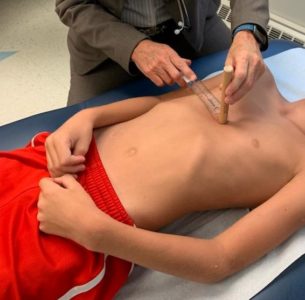
Should I Worry If My Child S Chest Is Sunken Cincinnati Children S Blog
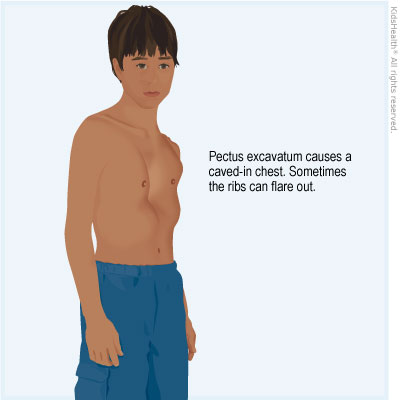
Chest Wall Disorder Pectus Excavatum For Parents Primary Children S Hospital
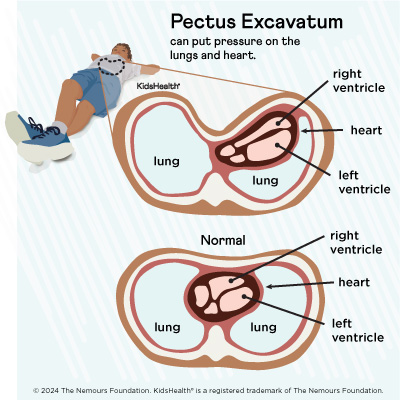
Chest Wall Disorder Pectus Excavatum For Parents Primary Children S Hospital

Pectus Excavatum And Improve Your Homoeopathic Knowledge Facebook

Pectus Excavatum In Babies Kids 7 Tips For Parents
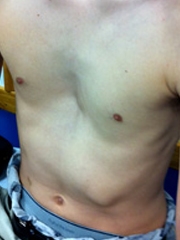
Pectus Excavatum Children S Hospital Of Philadelphia

Newborn Care Chest And Abdomen Philadelphia Fight

Help My Baby S Chest Is Caving In Pectus Excavatum Dr Paul Youtube

Pdf Prenatal Diagnosis Of Pectus Excavatum
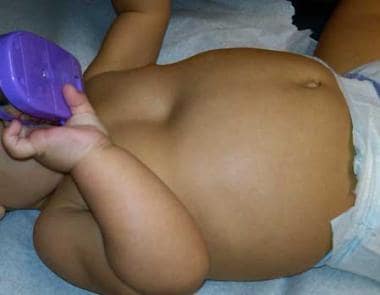
Nuss Procedure For Pectus Excavatum Background Indications Contraindications

Pectus Excavatum From A Pediatric Surgeon S Perspective Abstract Europe Pmc
How To Deal With Your Child S Pectus Carinatum Condition Align Clinic

A Proband At 3 Years Of Age With Pectus Excavatum Relatively Short Download Scientific Diagram

Pectus Excavatum Symptoms Treatments And Complications

Pectus Excavatum Symptoms Treatments And Complications

Pectus Excavatum Vancouver Sun

Anyone Familiar With This Issue December 2016 Babies Forums What To Expect

Pdf Pectus Excavatum A New Perspective On Correction Semantic Scholar